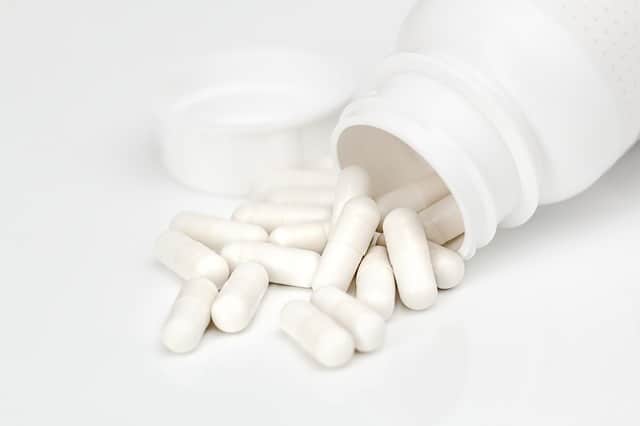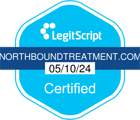Opioid abuse is a major problem throughout America. Between the years of 1999 and 2017, over 700,000 people died from an opioid-related overdose.
Drug addiction, especially to opioids and other related narcotics, can affect anyone from any walk of life. To keep yourself and your loved ones safe from harm, it’s important to learn how to recognize the early warning signs of dependency.
Keep reading to learn about some examples of opioids, their effects, and the signs and symptoms of addiction.
What Is an Opioid?
While the terms are sometimes used interchangeably, opioids, opiates, and narcotics are actually different drug types in the same family. Opiates are natural compounds that are extracted from the opium flower (poppies). Opioids are the synthetic versions of opiates, and narcotic is an umbrella term used to describe a substance that produces narcosis or insensibility.
Simply put, you can think of opiates as a subclass of opioids, and opioids as a subclass of narcotics. All of these drugs work in similar ways and are used for their intense pain-relieving effects. They are also highly addictive substances, and people sometimes find themselves accidentally hooked after taking the drugs according to a doctor’s prescription.
Examples of Opioids That Are Commonly Abused
Opioids are highly regulated and are legally available by prescription only. A doctor may recommend a course of opioids after a serious injury or major surgical procedure, or as a way to manage severe chronic pain.
Some commonly prescribed opioids include:
- Morphine (Kadian, Avinza)
- Oxycodone (OxyContin, Percocet)
- Hydrocodone (Vicodin)
- Codeine
- Fentanyl
- Oxymorphone (Opana)
Other illicit drugs, like opium and heroin, also fall into the opioid category. Many people who abuse heroin started by developing a dependency on prescription narcotics.
How Opioids Work
The body already contains a number of naturally occurring (endogenous) opioids known as endorphins, enkephalins, and dynorphins. These neurotransmitters are responsible for reducing anxiety, enhancing your mood, and relieving pain. They’re released as part of your body’s internal reward system during activities like vigorous exercise.
Opioid drugs target the same receptors on the surface of your neurons as these neurotransmitters do. As such, they produce many of the same results, but at a more intense level.
Unlike the endogenous ones, though, a recent study showed that non-endogenous opioids also bind to receptors inside the neurons. This discovery is a valuable step toward understanding what makes these drugs so incredibly addictive. In fact, opioids can start to produce feelings of dependency in as few as three days.
Signs and Symptoms of Opioid Addiction
Some of the signs of an opioid dependency are obvious, but others are all too easy to miss. If you’re concerned that you or a loved one might be abusing opioids, keep an eye out for these red flags.
Side Effects of Opioids
A person who is currently on any opioid drug will experience a number of physical and mental side effects, some of which are visible to the outside observer. These include:
- Marked drowsiness or nodding off
- Confusion or slowed thinking
- Nausea and constipation
- Feelings of euphoria or paranoia
- Slow breathing
- Overall lethargy
- Relaxed irises (causing “pinpoint” pupils in the eye)
Opioids and related narcotics are sedatives, meaning they depress the body’s nervous system. As a result, energy levels and reaction times may decrease significantly. A person who is taking opioid medication should avoid driving or operating heavy machinery while they are under the influence.
Signs of Overdose
The dangers of heroin are common knowledge, but even taking legal opioids outside of a physician’s orders can quickly lead to an overdose. Signs of an opioid overdose include:
- Loss of consciousness
- Awake but unresponsive and unable to talk
- Pupils that contract and don’t react to light
- Slowed, shallow, or stopped breathing
- Grey, blue, or ashy skin and lips
- Skin is cool and clammy
- Slowed, erratic, or weak pulse
- Vomiting and/or gurgling, choking sounds
If you suspect that a loved one has overdosed on opioid drugs, it’s vital to call 911 right away. While an overdose doesn’t usually result in immediate death, it can occur within a few hours without medical attention.
Warning Signs of Addiction
People in the early stages of an addiction are often unable or unwilling to recognize that they have a problem. But if you notice any of these red flags, it may be time to suggest they seek professional help.
- Developing a tolerance to the drug (needing higher doses to achieve the same effect)
- Experiencing withdrawal symptoms between doses or after stopping the drug
- Filling multiple prescriptions from different doctors
- Dramatic or uncharacteristic mood swings
- Finding extra pill bottles or drug paraphernalia in the trash
- Sudden financial struggles
- Social withdrawal
These are only a few of the possible signs of an addiction, but the surest one is continuing to take the drug despite negative consequences.
Long-Term Effects of Opioid Abuse
Abusing opioids over a long period of time can have serious effects on your health. They can damage nearly every system in the body.
The long-term effects of opioid abuse include a weakened immune system, chronic constipation, liver damage, and brain damage due to hypoxia. If the drugs are injected with a needle, users are also at risk of contracting bloodborne infections.
If it’s allowed to get out of control, opioid addiction can ultimately be fatal. That’s why it’s so important to seek out professional help as soon as possible.
How to Treat an Opioid Addiction
These examples of opioids are only a few of the common narcotics that can lead to a substance abuse disorder. Once someone develops an addiction, they’ll need a great support system of family, friends, and trained medical professionals to recover. Many people find that entering an accredited rehab treatment program gives them the best shot at success.
If you’re considering your options for rehab, Northbound Treatment can help. We offer a variety of detox, residential and outpatient substance abuse programs in Orange County, California. Contact us today to learn more about our effective, innovative treatments and find out if a rehab program is right for you.
Author
-

President, CEO & Founder at Northbound Treatment Network
Paul Alexander is the CEO, President & Founder of Northbound Treatment Network in Newport Beach, California. He believes wholeheartedly in transformational leadership, organizational health and effective, fully integrated substance use disorder and mental health treatment. With over 27 years of experience in behavioral healthcare, Paul has extensive knowledge of “in vivo” treatment modalities, clinical development, operations, strategy, marketing and financial planning. He has been widely recognized for his development of collegiate-based residential treatment programs for students in recovery and authored a research study at The University of California confirming this modality’s effectiveness.
Paul’s comprehensive professional experience, willingness to innovate, and emphasis on organizational health are vital factors in Northbound’s continued success. Paul received his Certified Addiction Treatment Specialist training at Saddleback College in Mission Viejo, CA, and was awarded Outstanding Alumni Service Award in 2002. Paul holds a Bachelor of Arts degree in Criminology, Law and Society, Summa Cum Laude, from University of California, Irvine, and a Juris Doctorate degree from Loyola Law School of Los Angeles. Paul currently serves on The National Association of Addiction Treatment Providers (NAATP) board. In addition, he serves on The Family Recovery Foundation board and The CarePossible board in Orange County; both organizations are committed to raising funds for family recovery and treatment for former military personnel. Paul is in recovery himself and lives in Orange County with his wife Silvana and his two young sons, Noah and Dean.










